| Red Zone | |
|---|---|
 | |
| Developer(s) | Psygnosis [1] |
| Publisher(s) | Psygnosis [2] |
| Platform(s) | Amiga |
| Release | |
| Genre(s) | Racing simulator [3] [5] |
| Mode(s) | Single-player [3] |
Red Zone is a 1992 racing video game developed and published by Psygnosis for the Amiga.
| Red Zone | |
|---|---|
 | |
| Developer(s) | Psygnosis [1] |
| Publisher(s) | Psygnosis [2] |
| Platform(s) | Amiga |
| Release | |
| Genre(s) | Racing simulator [3] [5] |
| Mode(s) | Single-player [3] |
Red Zone is a 1992 racing video game developed and published by Psygnosis for the Amiga.
Red Zone is a game about simulating motorcycle racing. The bike can be controlled with either a joystick or a mouse. Manual or automatic transmission can be chosen. [2] Three modes are available: practice, single race, and season. [3] [6] The game features 10 tracks, eight in Europe, one in Brazil, and one in Mexico. [7] There are six other competitors on the track during a race. [5] The game features damage modelling, the bike loses performance the further it's damaged. [1] Other riders can be knocked off their bikes if they're collided with. [3]
| Publication | Score |
|---|---|
| Aktueller Software Markt | 6/12 [8] |
| Amiga Action | 79% [2] |
| Amiga Computing | 30% [9] |
| Amiga Format | 64% [5] |
| CU Amiga | 72% [3] |
| Génération 4 | 38% [10] |
| The One | 87% [1] |
Red Zone received generally average reviews from critics. Amiga Action said the game is "a marginal improvement over Team Suzuki." and concluded that the game is "Reasonable but possessing nothing special over its more illustrious predecessors." [2] The One said "Red Zone is quite simply the most exciting bike-racing game yet." [1] CU Amiga said the graphics have more detail than MicroProse's Formula One Grand Prix but the game runs sluggishly with all the graphic options on. The game was also compared to Gremlin's Team Suzuki: "Red Zone is very good in some areas, but limps along with others. Its biggest problem is that visually it is too slow to be anywhere near as playable as Gremlin's effort, which is why I would go for the latter [...]". [3] Amiga Computing summarized: "The whole point of getting rid of excess detail is to speed up the gameplay, but the change is practically unnoticeable. Sorry Psygnosis but it's a turkey." [9] Aktueller Software Markt called the game mediocre that could have been good with smoother graphics and animation. [8] Amiga Format said: "This control system, accurate as it may be, is just too complicated for a game of this kind." [5] Génération 4 called the game a pale clone of Team Suzuki. [10]

Zool 2 is a side-scrolling platform video game originally developed by The Warp Factory and published by Gremlin Graphics for the Amiga in November 1993. It is the sequel to the original Zool, which was released earlier in 1992 on various platforms.

Walker is a horizontally scrolling shooter video game developed by DMA Design and published by Psygnosis for the Amiga in February 1993. The player controls a bipedal mech and is tasked with killing advancing enemies in stages set in multiple time periods. Development of the game began after the release of Blood Money, but was scrapped in 1990 because the game was not coming together. By the end of the year, development had recommenced with a redesign, inspired by sprites originally intended for Blood Money. Ian Dunlop and Neill Glancy designed the game, and Raymond Usher wrote its soundtrack. The game was released to positive reviews with praise directed at the game's graphics and sound, but reviewers were critical towards the repetitiveness of the gameplay. Amiga Power ranked it among their top 100 Amiga games of 1993.

Oh No! More Lemmings is an expansion pack for the puzzle video game Lemmings by DMA Design. It contains 100 single-player levels and six music tracks. The Amiga version also includes 10 two-player levels. The game requires either the install disk from the previous Lemmings, or, in a standalone version, the game manual, for use as a copy protector. The new levels are separated into five difficulty categories, each with 20 levels.
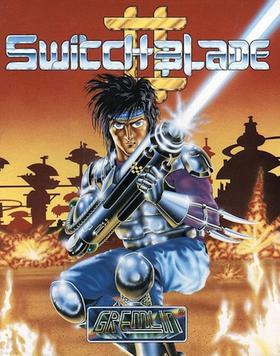
Switchblade II is a 1991 side-scrolling action-platform run and gun video game originally developed and published by Gremlin Graphics in Europe for the Amiga home computers. It is the sequel to the original Switchblade, which was solely created by Simon Phipps at Core Design and released earlier in 1989 across multiple platforms. Despite being primarily developed in the UK, its graphics had a distinctly Japanese style similar to anime or manga.

Monster Business is a 1991 vertically scrolling platform game developed by Eclipse Software Design and published by Ascon that was released for the Amiga and Atari ST.
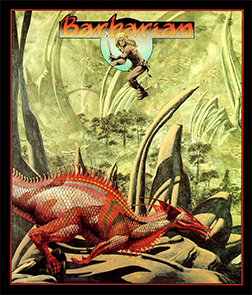
Barbarian is a 1987 platform game by Psygnosis. It was first developed for the Atari ST, and was ported to the Amiga, Commodore 64, MS-DOS, MSX, Amstrad CPC, and ZX Spectrum. The Amiga port was released in 1987; the others were released in 1988. The cover artwork is by fantasy artist Roger Dean.

Ruff 'n' Tumble is a 1994 platform run and gun video game developed by Wunderkind and published by Renegade Software for the Amiga. An Amiga CD32 version was planned but never released. It was the only game made by Wunderkind. It stars Ruff Rodgers, embarking on a quest across an alien planet to reclaim his marbles after one of them fell into a portal inside a rabbit hole while playing with his collection in the park, and free the planet from Dr. Destiny and his Tinhead army. Through the journey, the player explores and search through each level for items and power-ups, as well as fight enemies and defeat bosses.
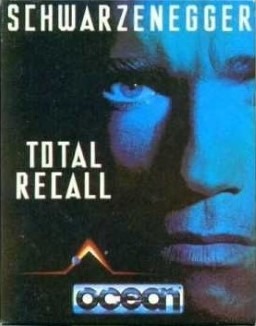
Total Recall is a 1990 platform game developed and published by Ocean Software that was released for the Commodore 64, Amiga, Amstrad CPC, ZX Spectrum, Atari ST, and Nintendo Entertainment System. Total Recall is based on the 1990 film of the same name.

Bomberman, also known as Dyna Blaster in Europe, is an action-maze video game originally developed and published by Hudson Soft for the PC Engine in Japan on 7 December 1990 and later in North America for the TurboGrafx-16 by NEC in 1991. Belonging to the Bomberman franchise, it is a re-imagining of the first game in the series starring White Bomberman on a quest to rescue Lisa, the kidnapped daughter of his inventor Dr. Mitsumori, from the castle of Black Bomberman while defeating evil monsters and villains that work for him. The game was later ported to home computers, each one featuring changes compared to the original version. Conversions for other platforms were in development but never released. The title garnered positive reception from critics since its initial release on the PC Engine/TurboGrafx-16 and later on home computers.
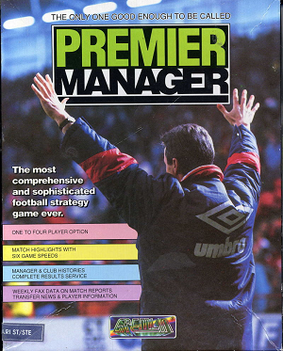
Premier Manager is a football management simulator video game for the Amiga, Atari ST, Acorn Archimedes and DOS platforms. It was released in 1992 by Gremlin Interactive. Later the game was converted to the Sega Mega Drive. While the Amiga, Atari and MS-DOS versions were all similar, the Mega Drive version more closely resembled Premier Manager 2. The objective of the game is to manage a football club successfully within the top five divisions of the English league system. Premier Manager is the first game in the Premier Manager series.
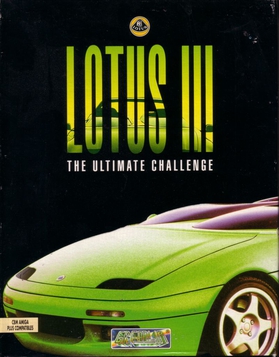
Lotus III: The Ultimate Challenge is the third and final game in the Lotus racing series.

Switchblade is a 1989 side-scrolling action-platform run and gun video game originally developed by Core Design and published by Gremlin Graphics in Europe for the Atari ST home computers. The first installment in the eponymous two-part series, the game is set in a dystopian future where players assume the role of Hiro from the Blade Knights as he embarks on a journey to defeat Havok, the main antagonist who broke free from his imprisonment after the sacred Fireblade was shattered into several pieces. Its gameplay consists of run and gun action mixed with platforming and exploration elements, with a main single-button configuration.
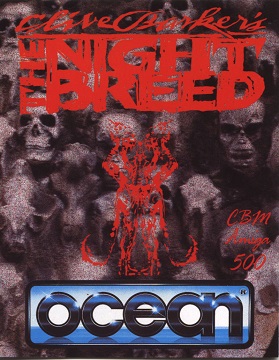
Clive Barker's Nightbreed: The Interactive Movie is a 1990 arcade adventure video game developed by Impact Software and published by Ocean Software on Atari ST and DOS. It is based on Clive Barker's movie Nightbreed, which in turn is based on Barker's novella Cabal. It was originally supposed to be part of a trilogy, alongside Clive Barker's Nightbreed: The Action Game and an ultimately-unreleased RPG.

Brutal Sports Football is a 1993 sports video game developed by Teque London and originally published by Millennium Interactive for the Amiga. It was re-published for MS-DOS and Amiga CD32, and later became the first third-party title published for the Atari Jaguar. The first entry in the Brutal Sports series, the game is a fictional style of football played against human or computer-controlled opponents. It features a different take on american football by emphasising the violent aspect of the sport.

Cover Girl Strip Poker, alternately titled Cover Girl Poker, is a 1991 erotic video game based upon five-card strip poker and originally developed and self-published by Emotional Pictures; it was released for the Amiga, DOS, Commodore 64, CDTV, and CD32. Cover Girl Strip Poker is the original Danish title; it was retitled Cover Girl Poker outside of Denmark in the rest of Europe, and the title was subsequently reverted to Cover Girl Strip Poker for the European CDTV and CD-ROM DOS releases. Emotional Pictures was a subsidiary of Danish company InterActive Vision A/S.

Worlds of Legend: Son of the Empire is a 1993 role-playing video game developed and published by Mindscape for the Amiga and MS-DOS. It is a sequel to Legend from 1992.

Ghost Battle is a 1991 action-platform video game developed by Interactive Design and published by Thalion Software for the Amiga and ported later to the Atari ST. After finishing Ghost Battle as freelancers, Austrian programmer Erwin Kloibhofer and Dutch graphic designer Henk Nieborg got an in-house job at Thalion. They went on to design another side-scrolling platform game, Lionheart (1993). It received a higher critical reception. Nieborg cited influences for Ghost Battle as Ghosts 'n Goblins, Green Beret, and various horror films.
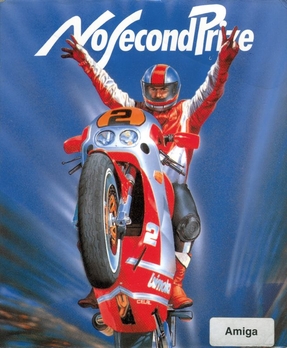
No Second Prize is a 1992 racing video game developed and published by Thalion Software for the Amiga and Atari ST.

Team Suzuki is a 1991 racing video game developed and published by Gremlin Graphics for the Amiga, Atari ST, and MS-DOS. A demo version of the game, titled Team Suzuki: Trainer Disk, was released in 1991. It includes only the practice mode.

Advantage Tennis is a 1991 tennis video game developed and published by Infogrames for the Amiga, Atari ST, and MS-DOS.
Practise A Track, Race One Track, Full Race Season
UK, Belgium, France, Brazil, Germany, Hungary, Mexico, Portugal, Italy, Spain